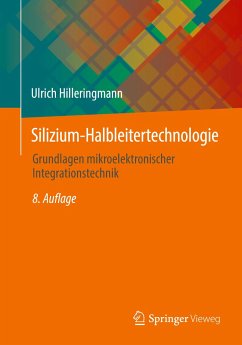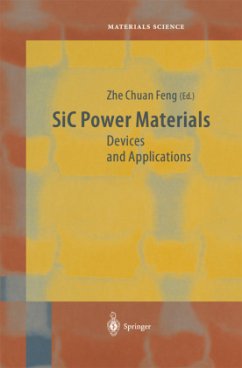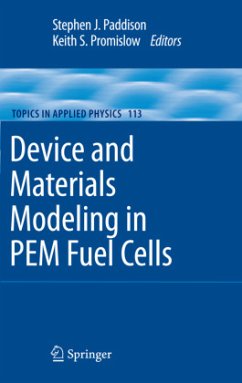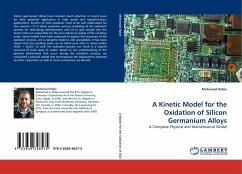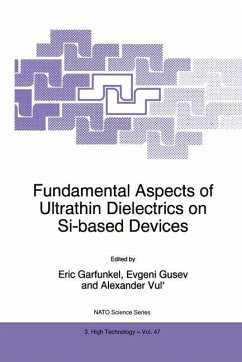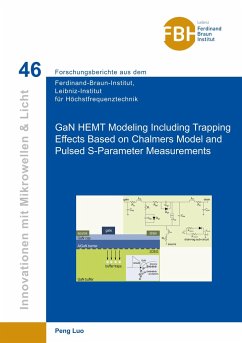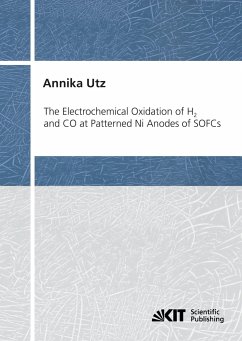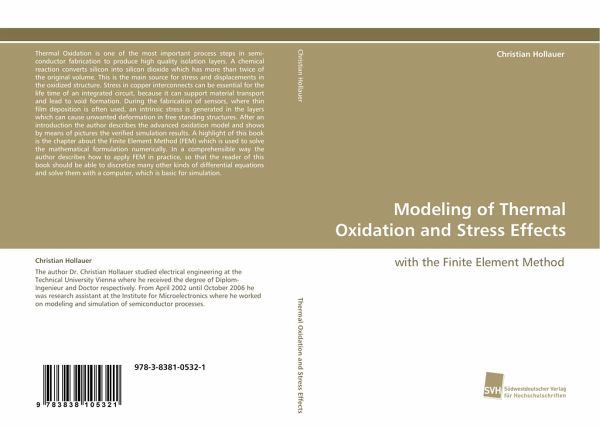
Modeling of Thermal Oxidation and Stress Effects
with the Finite Element Method
Versandkostenfrei!
Versandfertig in 6-10 Tagen
89,00 €
inkl. MwSt.

PAYBACK Punkte
0 °P sammeln!
Thermal Oxidation is one of the most importantprocess steps in semiconductor fabrication to producehigh quality isolation layers. A chemical reactionconverts silicon into silicon dioxide which has morethan twice of the original volume. This is the mainsource for stress and displacements in the oxidizedstructure. Stress in copper interconnects can be essential forthe life time of an integrated circuit, because itcan support material transport and lead to voidformation. During the fabrication of sensors, where thin filmdeposition is often used, an intrinsic stress isgenerated in the layers which...
Thermal Oxidation is one of the most important
process steps in semiconductor fabrication to produce
high quality isolation layers. A chemical reaction
converts silicon into silicon dioxide which has more
than twice of the original volume. This is the main
source for stress and displacements in the oxidized
structure.
Stress in copper interconnects can be essential for
the life time of an integrated circuit, because it
can support material transport and lead to void
formation.
During the fabrication of sensors, where thin film
deposition is often used, an intrinsic stress is
generated in the layers which can cause unwanted
deformation in free standing structures.
After an introduction the author describes the
advanced oxidation model and shows by means of
pictures the verified simulation results. A highlight
of this book is the chapter about the Finite Element
Method (FEM) which is used to solve the mathematical
formulation numerically. In a comprehensible way the
author describes how to apply FEM in practice, so
that the reader of this book should be able to
discretize many other kinds of differential equations
and solve them with a computer, which is basic for
simulation.
process steps in semiconductor fabrication to produce
high quality isolation layers. A chemical reaction
converts silicon into silicon dioxide which has more
than twice of the original volume. This is the main
source for stress and displacements in the oxidized
structure.
Stress in copper interconnects can be essential for
the life time of an integrated circuit, because it
can support material transport and lead to void
formation.
During the fabrication of sensors, where thin film
deposition is often used, an intrinsic stress is
generated in the layers which can cause unwanted
deformation in free standing structures.
After an introduction the author describes the
advanced oxidation model and shows by means of
pictures the verified simulation results. A highlight
of this book is the chapter about the Finite Element
Method (FEM) which is used to solve the mathematical
formulation numerically. In a comprehensible way the
author describes how to apply FEM in practice, so
that the reader of this book should be able to
discretize many other kinds of differential equations
and solve them with a computer, which is basic for
simulation.



